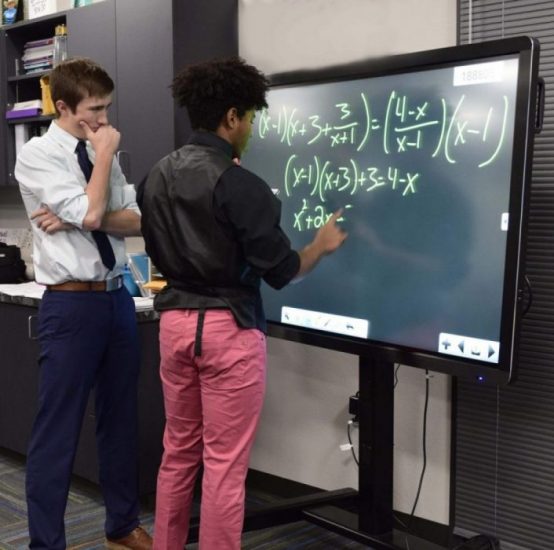What is active learning?
Active learning brings students into the lesson, so they are not simply passive observers. The key to is getting the students involved, and the use of technology is an emerging approach for many educators. Research into active learning is compelling and positive, finding that these methods are far more effective at helping students recall and fully understand the material they are exposed to. As such, educators that choose active learning methods, such as adopting interactive technologies, are providing their students with a decisive edge. A lot of research has been dedicated to active learning methods, most of it demonstrating profound positive effects for students. For example, in 1998, researchers reviewed the data from more than 6,000 physics students and found that the students in active learning classes scored around 25 points higher on their coursework. In 2011, a similar study found a 38 point increase. With compelling results on the subject, schools and universities fortunately have more tools than ever for creating the ideal active learning environment.Technology and active learning
Active learning can be achieved in a variety of ways, including integrating technology into lesson delivery. A/V technology can enhance many teaching methods and give educators plenty of tools in creating and providing lessons. Interactive flat panels are an ideal approach to active learning, and this is one of the primary reasons why interactive flat panels are being adopted by school districts all over the country. How can interactive displays promote active learning?1. Students actively access the panel – Active learning is only active if the student is leading the learning process. Teachers create the environment for the student to learn in and define the student’s learning objectives, but the student approaches those objectives as they see fit. Interactive flat panels are perfect for this form of learning.
Reputable interactive display manufacturers, like Clevertouch and Promethean, provide top notch software in addition to the display. This software allows teachers to plan and organize lessons that are interactive in nature. For example, the Clevertouch comes with the Cleverstore, which offers a reservoir of educational apps. Many of the apps are designed to encourage students to participate with game-like quizzes.
2. Students can collaborate easily with A/V technology – Collaboration is often a key element of active learning, as discussing material, working together to complete assignments and presenting information are all effective approaches. Interactive flat panels facilitate all of these learning methods. For instance, the Clevertouch’s screen can be divided into multiple zones for students, so that each student has their own work space. This is perfect for classes with younger students, as the display can be mounted as a flat work surface for several students to access. Each student can work on their own lesson, tailored to their level of proficiency, or the students can work together to solve problems, create art or explore media.
3. Students can link their device to the display – Active learning works best when the student is comfortable and able to focus on the lesson. This can be achieved in the classroom by allowing students to use their own technology during lessons. Interactive flat panels offer excellent connectivity, and the Clevertouch can connect with dozens of student devices at once. While connected, teachers can send the screen on the student’s device to the Clevertouch, and have the student present their work. With Promethean, teachers can also send rapid response quizzes to student devices to ensure they are comprehending the lesson. If these quizzes reveal that a student is having difficulty, the teacher can reinforce lesson material using the display’s onboard software.
4. Students have access to the internet in learning new concepts – The internet is a powerful treasure trove of media, and this can be put to use by educators. Students can collaborate on lessons, finding relevant media on the internet and send it to the display to add to the lesson. Students are so familiar with being online that allowing them to use the internet will ensure they better understand the material, in terms that make sense to them.
5. Students can be remotely linked to subject experts – This may be something only done rarely, but A/V solutions can be further enhanced with the use of video conferencing technology. With video conferencing capabilities, teachers can connect to experts in other fields, allowing them to introduce concepts in a novel way. With A/V technology, teachers have a world of experts and masters they can connect to.
Active learning methods are here to stay, and that’s a good thing for students. It’s clearly a better approach to lesson delivery in most settings, and educators that want the best outcomes for their students will find A/V technology to be a natural ally in this mission.


